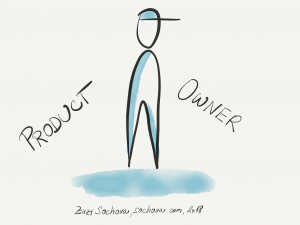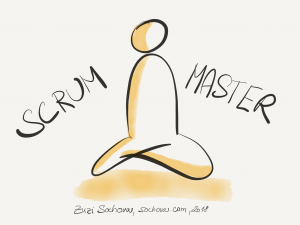 Being a Product Owner is not simple. At the end of the day, Product Owners are responsible for the overall Product success. They need to have business knowledge, authority and time. But let’s have a look what are the typical mistakes of a Product Owner as this is one of the very common questions at the classes and learn from that perspective. Here is the list:
Being a Product Owner is not simple. At the end of the day, Product Owners are responsible for the overall Product success. They need to have business knowledge, authority and time. But let’s have a look what are the typical mistakes of a Product Owner as this is one of the very common questions at the classes and learn from that perspective. Here is the list:
Doesn’t Have a Vision
Without a clear vision, there is no direction, no way Product Owner can prioritize, and no Scrum. It’s just a mess where all we can do is to say “everything needs to be done”. The key responsibility of the Product Owner is to have a vision and be able to share it with everybody. Agile organization is about having an evolutionary purpose. If you don’t have it, why are you even here? Similarly to the vision, we have a Sprint goal in Scrum. Without it, everything seems like a good idea to do in Sprint. Sprint goal helps us focus on the need, the real business value.
Can’t Say No
There is no way you can do everything. There are so many options in a complex world. So much functionality customers can ask for. The Product Owner who says yes to all wishes from the customers will fail as the quantity will burn out the organization. Instead, Product Owners are prioritizing based on the business value, and as 80% of value is hidden in only 20% of the functionality, they need to say no quite often during their prioritization.
Doesn’t Have the Business Knowledge
Business knowledge is wider than just a product understanding. It covers the understanding of customers, the market, and the competitive landscape. Without such deeper understanding, Product Owners can’t make a decision and are drafted by different stakeholder groups into their politic fights and the products are usually failing to deliver the real value. Product Owner doesn’t have to be technical, but the business knowledge is critical to their success.
Can’t Prioritize
Product Owner who believes everything needs to be done is not a Product Owner but customer or stakeholder. Prioritization is key in Scrum, at any time you shall know what is more important than the rest and what are we going to invest our energy (effort and money) into next and the rest later or never, depending on the feedback and impact we achieved by the value delivered. There is always more functionality which can be implemented. But maybe that little we already did is good enough for now and we can focus on some other more important areas. As I said already, 80% of value is hidden in only 20% of the functionality. There is no need to implement 100% of the ideas you have.
Don’t Have Negotiation Skills
The Product Owners without negotiation skills are very weak Product Owners. They often end us accepting everything customers ask for and are struggling to say no. Negotiation skill help Product Owners to understand not only what the users want but also what they need. Ant that’s the key part of the prioritization.
Estimates are the Key
Product owners who focus too much on estimates are mentally tight to the functionality, not the business value. In the traditional world, the estimates are important as all we care about is delivery, and we need to deliver more. In the Agile world, it’s not about delivering features. It’s about achieving certain business value. And those two have often only very little in common.
Doesn’t experiment
Product Owners who believe they can create a plan (in agile called Backlog) and then step by step execute it with the development teams during Sprints are not real Product Owners. Backlog can’t be farther from a plan and an iterative approach of delivery is here to inspect and adapt and learn from experiments. Find out where is the real value. The approaches like Lean Startup are quite useful here.
No Impact
As we said, Product Owner shall be able to run experiments. In a way, every backlog item is an experiment where you expect something will happen as a result. That’s the impact. Without knowing why you invest team time and energy into it, why to do it in the first place? Running an experiment without knowing how are you going to evaluate it is silly. That’s not an experiment but functionality you plan to deliver no matter what. Why? Because it’s important. Because I said so. Instead, spend more time identifying the impact so you know why you do it and what you expect to happen. Tools like Impact Mapping are quite helpful here.
Multiple Products
Or shall I say systems, or projects? Because product definition is much wider than that. Product Owners taking care of multiple product don’t have focus, and often don’t have time. Considering Product Owner is the person responsible for the overall product success including the return of investment, it’s quite useful to have the focus for making the product successful and don’t switch the context all the time.
Not Part of the Team
Product Owners sometimes feel they don’t belong to the team. They act as Backlog managers, telling the team what to do, and then waiting to get results/blaming at the end of Sprint. Instead of that, Product Owners are part of the Scrum team, they are team members, they shall collaborate with the team on delivering the value and achieving the Sprint Goal. They are part of the team.

